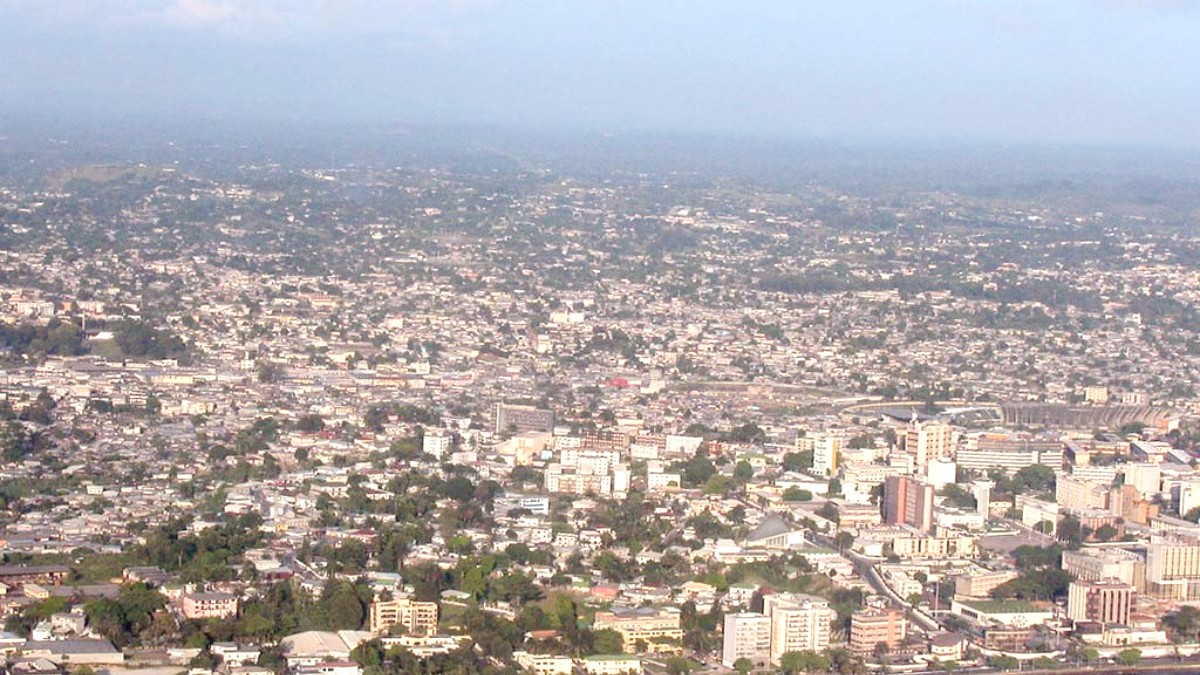
Gabon
The state-owned SOTRAVAG (Société de Transport de l'Agglomération de Libreville) runs a network of public buses across Libreville. These buses cover major routes, linking different neighborhoods and commercial centers. While they offer an inexpensive travel option, they can be infrequent and often become crowded, especially during peak hours. Official bus route maps are rare and not widely published. You may need to ask locals or conductors for route information.
Buses and shared taxis generally operate from early morning (around 6:00 AM) until late evening (around 8:00 PM or 9:00 PM). Frequency significantly decreases after dark. Finding public transport late at night becomes challenging, making private taxis or hotel-arranged transport a safer choice. Public transport in Libreville generally lacks accessibility for travelers with mobility challenges; vehicles are not equipped for wheelchairs, and sidewalks can be uneven.
Shared taxis adapt to passenger needs, not strict routes.
Major markets (Mont Bouët), commercial centers, prominent roundabouts.
Observe how locals hail taxis and negotiate fares.
Requires national license and IDP. Hertz and local agencies. 4x4 recommended for outside Libreville.
Not widely available or recommended due to road conditions and traffic.
Rare, no sharing programs. Unsafe on main roads due to traffic.
Drive on the right, seatbelts mandatory. Police checkpoints are common.
The waterfront promenade ('Bord de Mer' or 'Corniche') is relatively pedestrian-friendly for walks, especially in mornings or evenings, offering pleasant views. Central commercial districts are walkable during daylight hours. Sidewalks can be uneven, crowded, or non-existent in some areas. Organized walking tours are limited. Self-guided walks are possible in safe, well-lit areas during daylight. Plan your route with an offline map application. Libreville has minimal dedicated bicycle infrastructure. Cycling on main roads is not recommended due to heavy traffic, aggressive driving, and a lack of dedicated lanes or shoulders.
No hop-on-hop-off or formal tour bus services. Group tours use private vehicles and drivers through operators.
Local pirogues operate short crossings; not a formal taxi service but for local experiences. Regular ferry to Port Gentil.
Very limited infrastructure for mobility needs. Private transport with assistance is the most adaptable option.
For shared taxis, riding with two or three other passengers already in the car indicates the driver is on a general route, making long detours less likely for your individual trip. Always clearly state your destination or a well-known area. Learning basic French phrases for directions and landmarks will greatly assist communication. Observe how locals use shared taxis, noting where they hail them and how they negotiate fares; this offers insights into local norms and practices. This observation and learning contribute to more efficient and comfortable travel within the city's unique transport system.
Libreville's infrastructure is not designed with accessibility as a main feature.
Uneven sidewalks are common.
Buses and shared taxis lack ramps or other features for wheelchairs.
Not equipped for mobility aids.
Hiring private transport with assistance is the most adaptable option for travelers.
Contact hotels/operators in advance.
For shared taxis, try to ride with two or three other passengers already in the car. This indicates the driver is on a general route and less likely to take a long detour for just one additional passenger. Clearly state your destination landmark or a well-known area. Learning basic French phrases for directions and landmarks will greatly assist your journey. Observe how locals use shared taxis; note where they hail them and how they negotiate fares. This local observation leads to more efficient movement within the city.
For short crossings within Komo River estuary.
Main sea transport for inter-city travel.
Most adaptable for mobility needs or specific routes.
If you have specific accessibility needs, contact your accommodation and any tour operators well in advance. Discuss your requirements to confirm they can provide the necessary support or suitable arrangements.
Consider its bulk, weight, and your comfort level with potentially lower-quality rental options. For anything that directly impacts your enjoyment or safety, bringing your own is often the better choice.